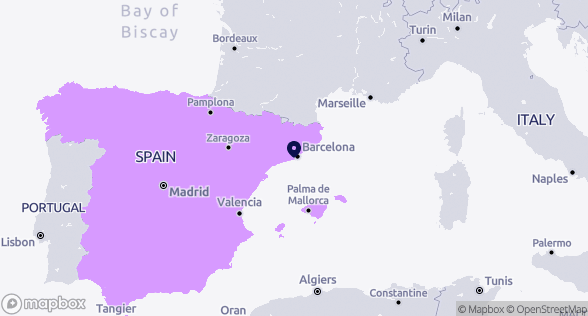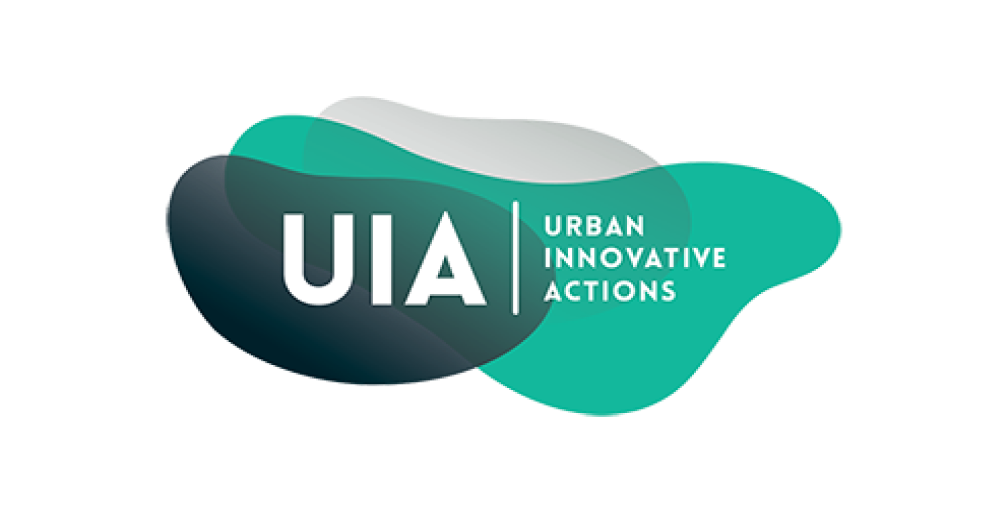
Viladecans
Spain
Vilawatt - Viladecans
In the Vilawatt project, local stakeholders implemented a participative housing renovation project to bring the energy transition to the low-income neighbourhood of La Montserratina in Viladecans. Vilawatt’s goals were to foster the energy transition by improving the energy governance at local level by setting a Public-Private-Citizen Partnership that provided key energy services though a one-stop shop of administration.
To ensure that the transition to a more sustainable energy model leaves no none behind, the project established a broad energy governance Public-Private-Citizen Partnership (PPCP) including:
- Viladecans City Hall and Barcelona Metropolitan area authorities
- citizens
- businesses
The PPCP monitored the project’s activities, which included optimising the energy supply (e.g., by giving preference to renewables, aggregating energy demand, studying different tariffs, etc.,), launching awareness-raising activities, and promoting the renovation of buildings.
The project analysed the state of the building stock and identified the buildings most in need of retrofitting. This led to the deep energy renovation of three residential buildings through a participatory process - involving both dwelling owners and the technical team.
Viladecans set up a ‘Vilawatt Info Point’ to reach out to citizens and help them better understand their electricity and gas bills. The Info Point also helps citizens reduce their energy consumption by, for example, changing their usage habits or taking part in grouped energy purchases. The project also created a local currency, which intended to reward citizens for their energy saving that could spend in local businesses. This helped to foster change in energy consumption habits.
This is a case study as part of an UIA report. You can access all of the project's resources on its project collection page.
2. Viladecans and Just and Green Transitions
2.1 What are the implications for Viladecans?
The Montserratina district developed in the 1950s following large-scale immigration but remained isolated from Viladecans centre. New inhabitants typically constructed precarious homes at their own initiative by means of auto-construction, which were later allowed to grow to three floors. In 1960s and 1970s new buildings with ground floor plus three or four floors were built by local developers. These buildings have poor energy performance, leading to high household energy demand for air conditioning. The neighbourhood’s energy requirements have increased over the years and sometimes, this demand has remained unmet despite the area benefitting from some significant urban development initiatives.
The transition towards a more sustainable and efficient energy model is one of the goals identified in the Viladecans 2030 Strategy. As one of the 5 main missions of the city, this strategy aims to achieve carbon neutrality by 2030. This vision includes solutions for vulnerable groups, such as Montserratina’s residents. It builds on previous local sustainable development strategies (Agenda 21, the Covenant of Mayors initiative for local sustainable energy, the Covenant of Mayors for Climate and Energy, and the Declaration of a Climate Emergency). The Local Urban Agenda will also guide the work of the local government in the coming years towards an inclusive and therefore just approach. And the EU’s 2019 Clean Energy for All Agenda similarly goes firmly in this direction.
The question is how to deliver this vision. Under the UIA project, local stakeholders opted to deliver the project through a multi-disciplinary governance structure, the PPCP. This was to ensure a close working relationship and, crucially, the pooling of knowledge and experience between the city’s social, environment and energy departments. The involvement of relevant external stakeholders and citizen participation was also an important part of the Vilawatt approach (see also question 3 below).
2.2 What barriers has Viladecans faced implementing the just & green transition?
On the supply side, the private sector is reluctant to invest in the energy transition if they perceive a risk. But there is also a demand side problem because changing energy consumption behaviour is hampered by social, cultural, and economic barriers. For example, upgrading occupied buildings can be hampered by some residents’ low trust in the process (e.g., allowing strangers to carry out work in their private space), and in the system (e.g., fear of losing tenancy rights). In addition, both residents and owners might also have a poor understanding of the long-term benefits that energy modernisation can bring them.
Other barriers affecting this project included administrative and technical complexities:
- The taxation system limited Vilawatt’s ability to subsidise energy renovation.
- The PPCP faced the organisational complexity of setting up a new PPP governance model (administrative burden and process implementation).
- Finally, developing an energy currency also faced legal complexity due to (1) statutory restrictions applying to electronic money and (2) the use of blockchain technology.
3. How does Vilawatt promote the just & green transition?
The Vilawatt project fostered the transition towards a sustainable energy model by designing a package of solutions to support this process, among which, the deep energy upgrading of buildings was one of the 5 main pillars. These solutions targeted not only specific vulnerable groups from La Montserratina (inclusion of relevant stakeholders in the PPCP, analysis of the buildings they live in), but also worked with them to provide tailored services (e.g., with the Vilawatt Office and the energy currency). Together with the integrated governance led by the city administration, this is a purposive approach in ensuring that target groups are understood, empowered and provided with suitable solutions.
4. Key to success
a. Ensuring the project possesses the right expertise and resources (esp. skills)
Benchmarking and analysis were crucial to developing the PPCP’s administrative and legal procedures. Project management, legal administration, and financial assessment each required considerable and highly specialised external support. To ensure that the project was implemented within the strict 3-year project timeframe, the PPCP had to bring in the right skills, including external ad hoc support, as and when needs arose, and do so swiftly.
b. Pre-identifying challenges and issues and learning lessons
Forward and contingency planning are vital. The Vilawatt project had to address the legal and fiscal complexities of launching a local energy currency (e.g., retention periods, restriction of electronic money laws, implementing blockchain technology, etc.,). The currency model had to consider the economic and the legal dimensions, ensure operational compatibilities, and satisfy the interests of the participating stakeholders. All of which requires advanced planning. Similarly, benchmarking and analysis were crucial for developing the PPCP’s administrative and legal procedures.
As a lesson learnt, any ex-ante risk evaluation in this policy area could usefully consider a strategy to mitigate potential disruption caused by the energy upgrading work, such as impacts on public lighting, works affecting streets, traffic, etc.
c. Limiting the technological risk
Solutions like an energy currency also have a technology component. Therefore, the technical team should have experience in the financial and virtual currency sector and be able to guarantee the highest security and quality of service on the payment platform. Even though there is no cryptocurrency proposed, in the case of cyber-attacks, the system must respond effectively and quickly. Vilawatt achieved this by creating a strong and complementary partnership.
d. Creating virtuous circles
Investing early on, with a clear and comprehensive implementation plan, and securing resident engagement, reduces resistance to change and embeds new behaviours. The project made this possible through its inclusivity, strong communication and engagement campaigns and through its energy currency component. The project hired a currency broker to promote the use of the Vilawatt virtual currency, which was greatly facilitated by incorporating it into an existing municipal application. Success depended on creating virtuous circles of use, offering examples that showed potential users the benefits of participation, such as discounts on certain purchases, public parking fees or the payment of municipal taxes. Gamification also helped to build acceptance and foster behavioural change.
e. Creating a viable and agile organisational structure
The project’s solutions are not economically viable on their own. While, as a form of smart public investment, they must offer value for money and be professionally managed, they will not generate revenues. Projects such as Vilawatt should be led by a viable organisational structure, whose ethos is to work for the common good.
5. Scaling up and replication potential
Other cities can easily replicate Vilawatt’s different modules and solutions, either partially or entirely, to help ensure a local energy transition for all. A governance model such as Vilawatt’s PPCP can play a vital role in the energy transition at the local level by empowering local communities and creating a sense of belonging, trust and teamwork among the different parties. Other building owner communities, neighbourhoods and local authorities could take inspiration from the PPCP model to implement a similar local energy transition policy. The approach can be operational quickly, with only slight adjustments to local characteristics if needed. Larger urban areas could also easily adopt the model.
The legal and fiscal work undertaken to ensure that residents can benefit from the renovation work without what they might perceive as a fiscal burden, can inform other Spanish cities operating in the same fiscal environment. It can also inspire other cities to identify the best solutions in their existing legislative contexts.
The Vilawatt Information Point is a format that cities can adapt to deliver many initiatives or schemes (e.g., expanding the services in relation to energy, or linking them to other issues, e.g., social issues). An Info Point can be used by cities and neighbourhoods of any size.
Finally, the Vilawatt currency is a legal electronic currency and once the regulation and electronic citizen identity are made operational, it will open a window of opportunity to enable and reward greener lifestyles and choices, as well as promoting the local commerce. Any city can give its own personality to a local currency and make it a source of local pride.
About this resource
The Urban Innovative Actions (UIA) is a European Union initiative that provided funding to urban areas across Europe to test new and unproven solutions to urban challenges. The initiative had a total ERDF budget of €372 million for 2014-2020.
Similar content






Want to replicate this urban practice in your city?
Apply to an EUI City-to-City Exchange
Connect with a peer city who can bring you solutions and expertise and apply together to receive EUI support
More infos on EUI websiteBrowse existing Innovative Actions looking for Transfer Partners and cities willing to do a City-to-City Exchange looking for peers